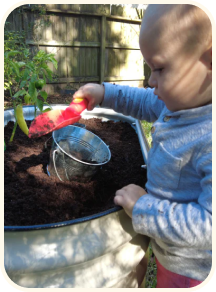What the Fork? Wild Onions
By Mark “Merriwether” Vorderbruggen, Ph.D.
Of all the possible edible “weeds,” wild onions (Allium spp.) are by far the best choice for a Texan’s first foraged food.
Why? Because they are likely nearby, easy to tell apart from their deadly mimics, and useful in all sorts of dishes. If you really want to start eating the wild plants around you but lack confidence in your ability to properly identify the unknown flora, this is definitely where to start.

Why are wild onions likely to be nearby?
Texas has ten distinct ecological zones, ranging from the Pineywoods of the east to the Trans-Pecos of the west; prairies and marshes along the Gulf to the High Plains up north; and six more in between. Texas also has 14 native species of wild onions along with two non-native onions. Each of our ecological zones has its own onion plus one or two others that can survive there, too. This may seem like a lot of different onions, but across North America one can find 112 different Allium members. This is a very prolific genus.
If you’ve ever seen chives at a store, you know what wild onions look like.
At the base will be a single bulb, rarely even one inch in diameter, with a mass of roots radiating outwards from the bulb bottom and a white stalk heading upwards from the bulb top. Slicing this bulb in half will reveal that it consists of layers of fleshy “scales” with the outer ones encompassing the inner scales. The outer scales form the exterior white sheath of the 1/8-inch diameter stalk. As one moves up the stalk, you’ll see it is made of several tubular leaves wrapped around each other at the bulb but spreading apart away from the bulb. Being tubes, these leaves are hollow and will be either round or U-shaped, depending on the species. The length of these chive leaves is also dependent on the species. Some in West Texas are only two-to-four inches long, whereas in the rich soils of East Texas, they can reach almost two-feet tall.
At the very center will be a stiffer stalk called a “scape,” from which will grow what looks like a cluster of nutlets, which will in turn produce small white, pink or purple flowers on short stalks. These flowers will have six petals and usually six stamens and rarely exceed 1/4-inch in diameter. Crushing the flowers or any other part of the plant will release an onion-like scent. And that scent is the key to properly identifying an edible wild onion. If your plant looks like a chive/onion and smells like a chive/onion, it is an edible Allium.
That scent is important because Texas does have three onion-mimics. One is relatively harmless but the other two have the potential to be deadly. The harmless one is “crow’s poison” (Nothoscordum bivalve) and is often found in Texans’ yards in winter/spring. The most common of the deadly ones are rain lilies (Zephyranthes spp.), which have the bulb and chive-like leaves but produce large, six-petaled flowers over one inch in diameter. Cutting a leaf or stem of the rain lily releases voluminous amounts of a thick, colorless slime. The other mimic is “death camas” (Zigadenus spp.), of which five different species exist across Texas. But have no fear — these all may look like onions, especially when not flowering, but they all have a bland, grassy smell.
Now that you’ve found your local wild onions, let’s eat. The green, tender leaves are a direct replacement for chives. The bulbs can be pickled and used as cocktail onions. The pre-flower nutlets add a crunchy onion-effect to your dishes, even more so when lightly roasted. The flowers, as well, can be used to give both beauty and flavor to a meal. These onions are an excellent source of vitamin C and assorted antimicrobial/infection-fighting compounds, too.
Note, once you discover your onions, you’ll be tempted to replant some in your yard. Trust me, this is best done in containers or pots on your kitchen windowsill because even the native ones can spread vigorously. St. Augustine grass is no match for well-established onions.
Ready for the onion hunt? You can do it!





























Leave a comment